
Chilean pine (Araucaria araucana), branch with cones Stock Photo 76070667 Alamy
The bunya pine, or Araucaria bidwillii, is famous for its huge cones and its delicious seeds. It's a relative of the monkey puzzle tree, another curious plant. Like its relative, the bunya pine is an evergreen conifer that has an unusual branching pattern, strange leaves, and edible seeds inside a large cone.

Cone of Araucaria Heterophylla Stock Photo Image of round, ornamental 60351796
Although sometimes referred to as "pines," members of the araucaria family have seed cones and foliage that are distinctly different from those of the pine family. Trees in the pine family have cone scales with a pair of winged ovules (seeds) on the upper surface; members of the araucaria family have only one ovule per scale.
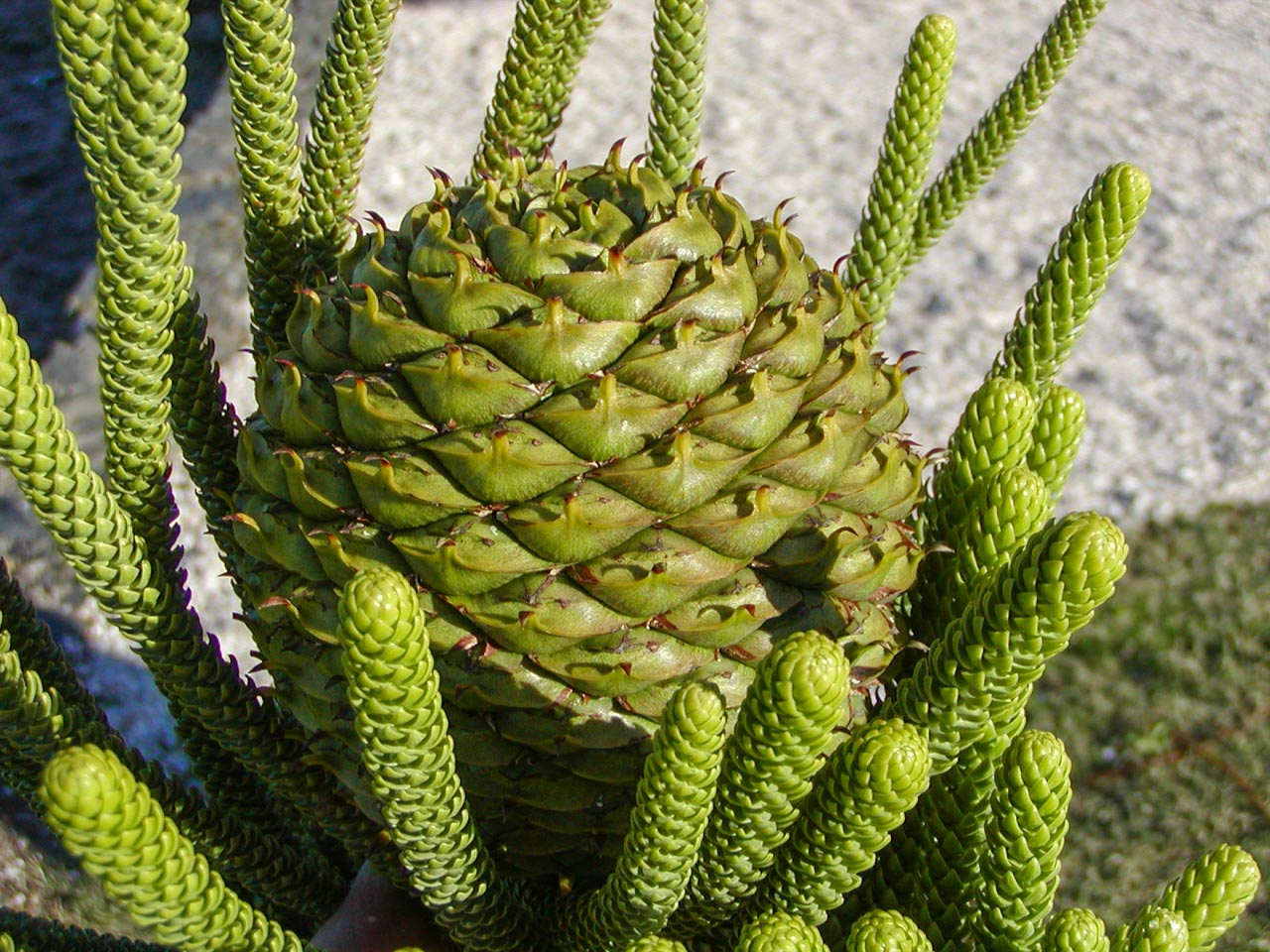
Araucaria heterophylla (Norfolk Island pine) description
Araucaria columnaris (New Caledonian Pine) is a narrow columnar evergreen conifer with short, mostly horizontal branches that grow in whorls around the slender, upright to slightly leaning trunk. The branches are lined with cord-like, horizontal branchlets clad with small, green, incurved, spirally arranged, overlapping leaves. The juvenile leaves are needle-like while the adult leaves are.

Cone of Araucaria heterophylla on a branch, sunshine Stock Photo Alamy
Use a sharp spade, shovel, or ax to cut the tree's roots in a circle around the trunk. The further away from the trunk you dig, the smaller the roots will be. Try digging about 1.5-2 feet away.

Araucaria cones close up stock photo. Image of chilean 182190716
Araucaria bidwillii (Bunya Pine): Found in Australia, the Bunya Pine is renowned for its large and edible pine cones, which have cultural significance for indigenous communities. Araucaria heterophylla (Norfolk Island Pine): Originating from Norfolk Island in the South Pacific, this tree has a distinctive symmetrical shape and is often.
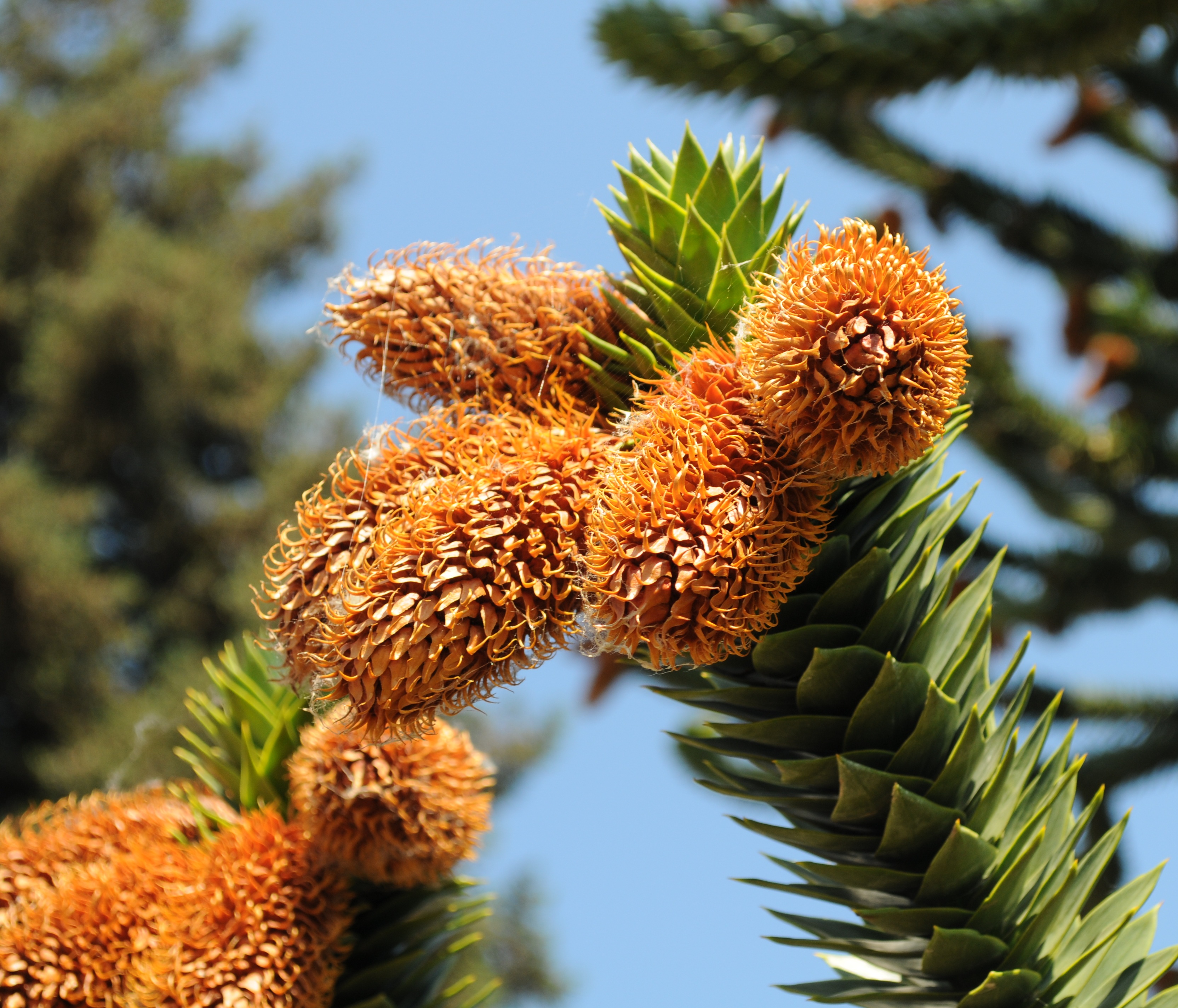
Free Images araucaria araucana cones tree
Araucaria araucana, commonly called the monkey puzzle tree, monkey tail tree, piñonero, pewen or Chilean pine, is an evergreen tree growing to a trunk diameter of 1-1.5 m (3.3-4.9 ft) and a height of 30-40 m (98-131 ft). It is native to central and southern Chile and western Argentina. [3] It is the hardiest species in the conifer genus Araucaria.
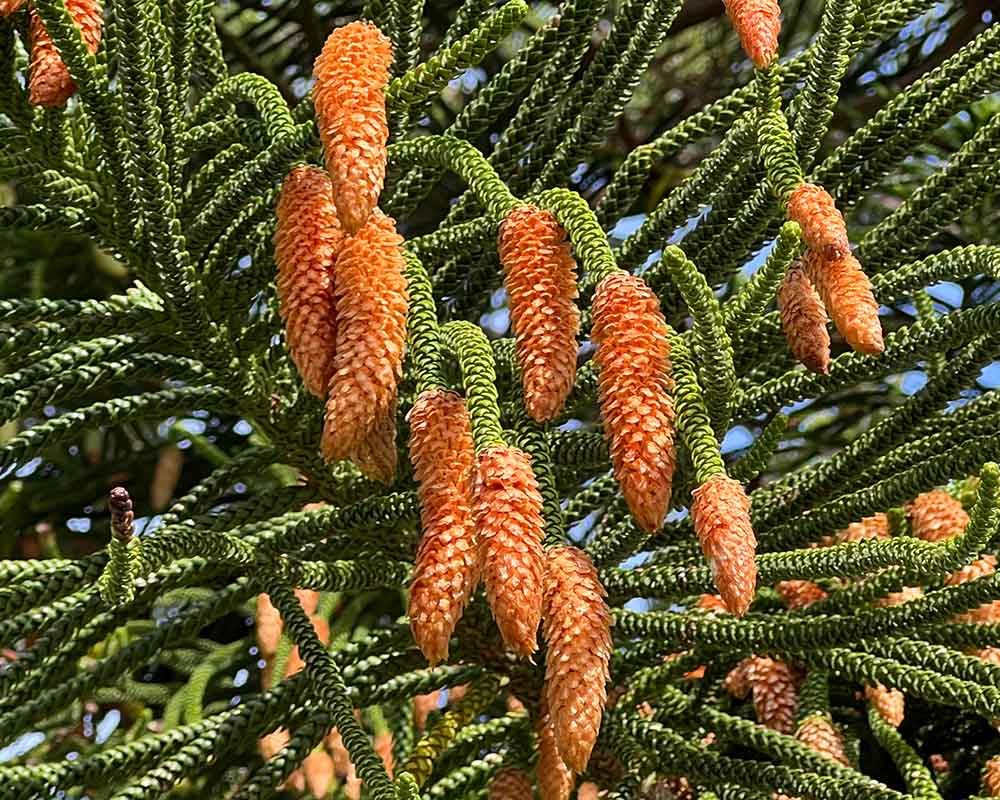
Araucaria heterophylla
Chilean Pine Pronunciation: a-row-KAH-ree-a a-row-KAH-na Family: Araucariaceae Genus: Araucaria Type: Broadleaf Native to (or naturalized in) Oregon: No This evergreen tree is a conifer but it has rather broad leaves and so it is included under this search system.

Norfolk Island Pine – Male Cones Stock Photo Image of araucaria, hemisphere 163701764
Araucaria heterophylla (Salisb.) Franco 1952. Common names. Norfolk Island pine. Taxonomic notes. Syn: Abies columbaria Desf. 1815; Eutassa heterophylla Salis. 1807. Description "A conical tree 50-70 m. tall, 1.25-1.75 m. in girth. Bark gray-brown, exfoliating in fine scales. Branches in a flat horizontal plane, sometimes pendent, branchlets in.

Cone of Araucaria Heterophylla. Stock Image Image of natural, hanging 147383009
The World's Biggest Airport - New Istanbul Airport is fully operational from 6th April 2019. All existing flight operations from current Ataturk Airport will.
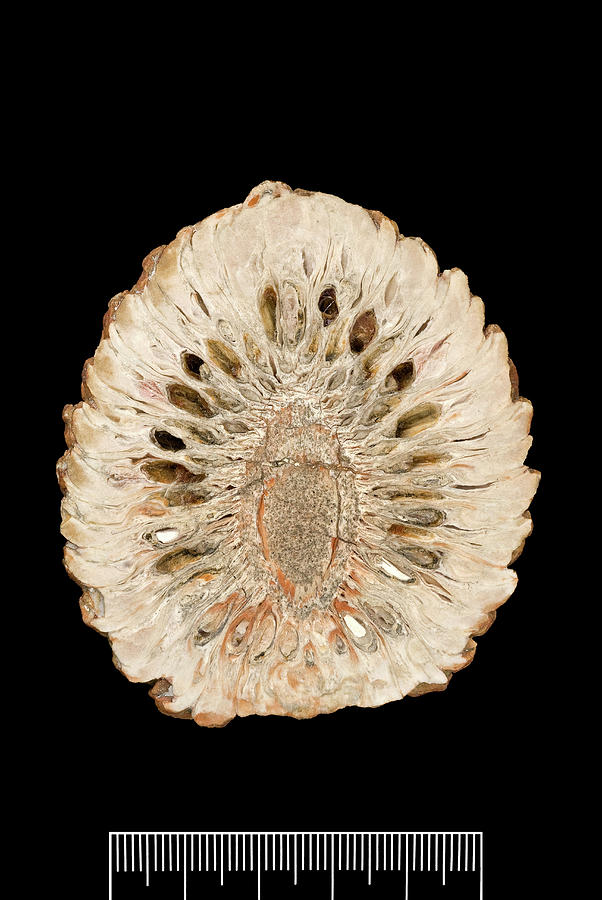
Pine Cone (araucaria Mirabilis) Fossil Photograph by Natural History Museum, London/science
Male cones Female cone Seeds Phenology The trees pollinate in South East Queensland in September/October. [clarification needed] The cones require fifteen months to mature, [14] and the cones fall 17 to 18 months after pollination in late January to early March from the coast to the current Bunya Mountains.
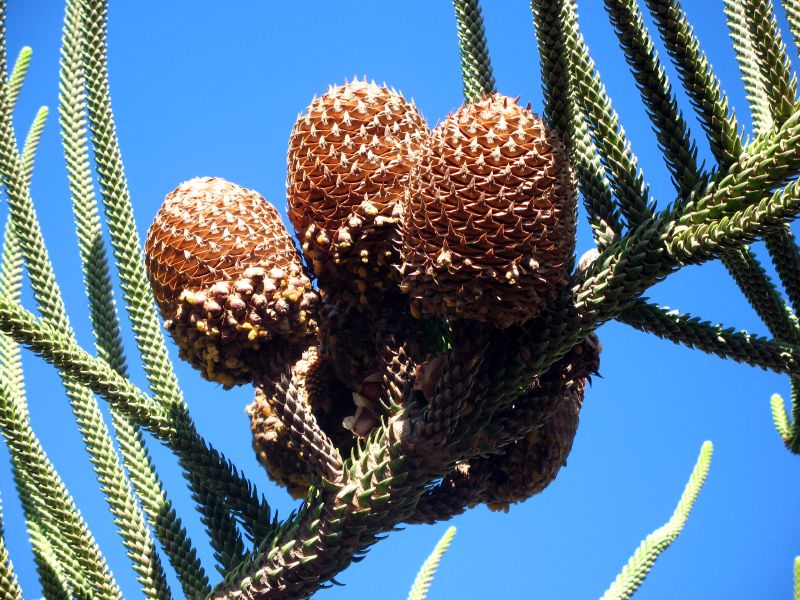
Tree Identification Araucaria heterophylla Norfolk Island Pine
Elegant, Araucaria heterophylla (Norfolk Island Pine) is a pyramidal evergreen conifer of symmetrical habit with regular tiers of whorled, horizontal branches radiating outward from the strong, upright trunk. The juvenile leaves are needle-like, incurved, green while the adult leaves are scale-like, incurved, densely arranged, bright dark green.

PlantFiles Pictures Araucaria Species, Chilean Pine, Monkey Puzzle Tree, Monkey Tail Tree
Description A very young A. angustifolia It is an evergreen tree growing to 40 m (130 ft) tall and 1 m (3 ft 3 in) diameter at breast height. However, the largest individual, near Nova Petrópolis, Rio Grande do Sul state, Brazil is 147.7 feet (45 m) in height with a D.B.H. (diameter at breast height) of 12.5 feet (3.8 m) girth. [9]

Araucaria bidwillii cone Pine cone decorations, Magical forest, Pine cones
Reaching a recorded height of 45m, with trunks like a sauropod's leg and sporting cones bigger than a bowling ball, few things say ancient like a Bunya Pine. The Bunya (bunya-bunya, bunyi, booni-booni or bonya in various aboriginal dialects), while indeed still a conifer, is not a true pine. It belongs to an ancient family of coniferous trees.
Trees of Santa Cruz County Araucaria heterophylla Norfolk Island Pine
The cones are from 20 to 22 cm (8 to 8.5 inches) broad and 17 to 19 cm (7 to 7.5 inches) long. The wood of the tree is hard and durable. bunya pine Bunya pine (Araucaria bidwillii). The monkey puzzle tree and several other members of the genus are cultivated on the Pacific coast of the United States and also in some cases in southern Florida.

The Foliage and Fresh Pine Cones of Araucaria Angustifolia Stock Image Image of leaf, natura
Each male cone produces about 120 to 200 seeds. The trees are wind-pollinated. Gardener's HQ Araucaria Araucana Growing Guide In its native habitat, the Monkey Puzzle tree, also known as Chilean Pine, reaches heights of 50 to 80 feet (15 to 24 m) with about a 20 to 30 foot spread (6 to 10 m), but it grows to only about half the size in cultivation.

Araucaria's cone 2 stock image. Image of nice, tree 77397875
Araucaria bidwillii. Hook. 1843. Common names. Currently known as bunya pine, or simply bunya. Early settlers in Australia recorded many forms of the name used by indigenous peoples, including Banza-tunza, Banua-tunya, boonya, bunyi, bahnua, bon-yi, banya bunya, bunnia, bunya-bunya, and bonyi-bonyi.The superficial similarity of these names suggests that native peoples knew it by much the same.